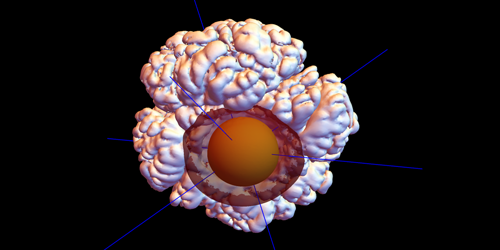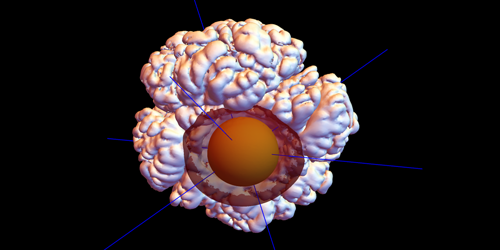Neutrino Flashes from Exploding Stars
When old stars go boom, they emit a characteristic light signal that helps measure the expansion of the Universe. Astrophysicists are still uncertain, however, about the explosion mechanism of these supernovae. Neutrinos from the blast could provide the answer. New calculations show that current and upcoming neutrino detectors could measure the neutrino signal from a nearby supernova and potentially identify which explosion model applies.
A type Ia supernova occurs when a dense old star, called a white dwarf, accretes matter from a stellar companion. The added mass kick-starts carbon fusion in the white dwarf, causing it to explode. The brightness of the supernova can be used to estimate the distance to the star. But so far, the light signal has not given up the identity of the stellar companion or the inner workings of the explosion. For that, scientists may need to observe the neutrinos emitted by nuclear reactions in the exploding white dwarf.
In a pair of papers, Warren Wright from North Carolina State University, Raleigh, and his colleagues have performed detailed simulations of the neutrino emission from a type Ia supernova. The authors considered two representative explosion models—the deflagration-to-detonation transition (DDT) and the gravitationally confined detonation (GCD) scenarios—which differ predominantly over how spherically symmetric they are. Compared to previous efforts, these new computations are more detailed, including several lines-of-sight and incorporating flavor-changing neutrino oscillations. The authors found that a type Ia supernova occurring within a few thousand light years of us should be detectable at various neutrino detectors around the world. Such an observation could finally reveal the elusive explosion mechanism, as the DDT scenario would produce a neutrino signal 10 times greater than the GCD scenario.
This research is published in Physical Review D.
–Michael Schirber
Michael Schirber is a Corresponding Editor for Physics based in Lyon, France.





